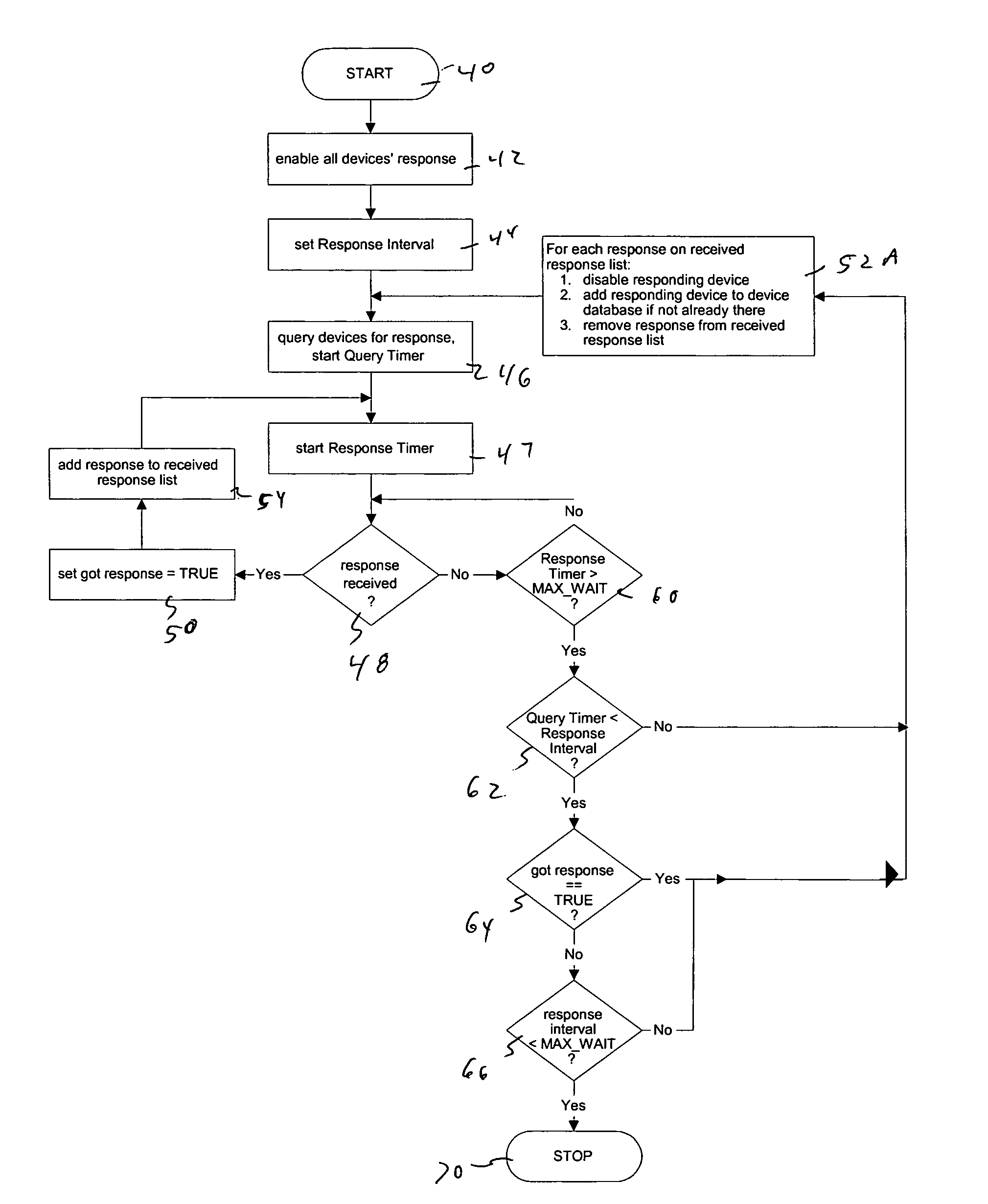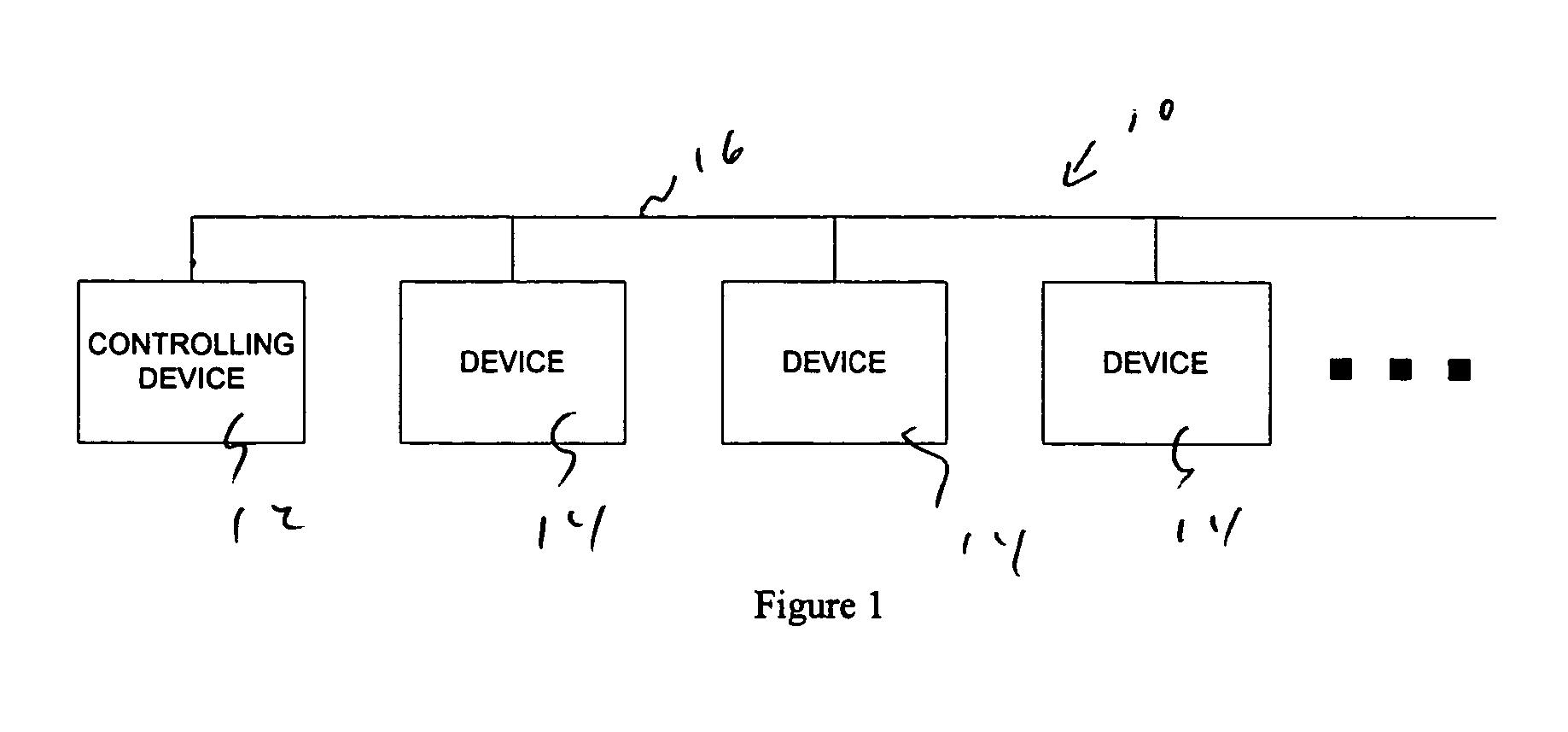Adaptive algorithm for locating network devices in an ECP brake-equipped train
a technology of network devices and adaptive algorithms, which is applied in the direction of vehicle position/course/altitude control, process and machine control, instruments, etc., can solve problems such as problems such as problems, network traffic overloaded, and difficulty in choosing an interval
- Summary
- Abstract
- Description
- Claims
- Application Information
AI Technical Summary
Problems solved by technology
Method used
Image
Examples
Embodiment Construction
[0019]An ECP train consisting of one or more locomotives and a plurality of cars each having one or more nodes or devices in the network 10 of FIG. 1. The controlling device 12 in the train network is the head end unit HEU. The other nodes or devices 14 may be the brake control devices CCDs on the cars, the power source controllers PSCs on the locomotives and the end of train device EOT. The network 10 includes buss 14.
[0020]The method of locating and identifying nodes in the train of the prior art, as illustrated in FIG. 2, begins at start 40. Enabling devices responsive to an inquiry at 42 is performed by sending a control query message, according to the appendix, with the command bid set to zero or unlock. Next, there is setting a response interval at 44. The initial length setting for the response interval in seconds is based on the expectation of the largest number of devices possible on the network and the average rate at which the responses are to appear on the network. For e...
PUM
| Property | Measurement | Unit |
|---|---|---|
| length | aaaaa | aaaaa |
| interval length | aaaaa | aaaaa |
| lengths | aaaaa | aaaaa |
Abstract
Description
Claims
Application Information
 Login to View More
Login to View More - R&D
- Intellectual Property
- Life Sciences
- Materials
- Tech Scout
- Unparalleled Data Quality
- Higher Quality Content
- 60% Fewer Hallucinations
Browse by: Latest US Patents, China's latest patents, Technical Efficacy Thesaurus, Application Domain, Technology Topic, Popular Technical Reports.
© 2025 PatSnap. All rights reserved.Legal|Privacy policy|Modern Slavery Act Transparency Statement|Sitemap|About US| Contact US: help@patsnap.com



